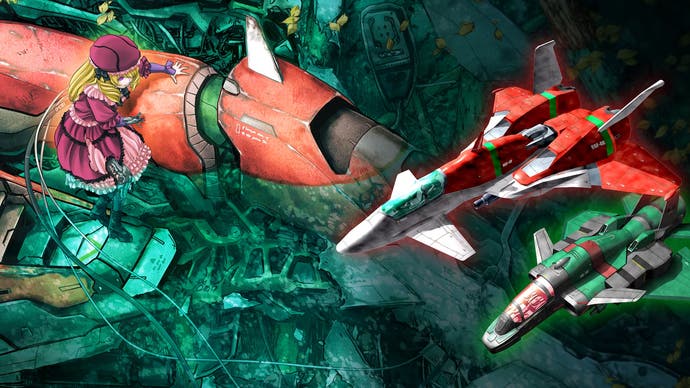DoDonPachi Blissful Death Re:Incarnation review - the ultimate port of the ultimate shooter
Bee prepared!
It absolutely feels that M2's ShotTriggers series has been building up to this moment.
The Japanese developer and publishing house has, over its long history, established an enviable reputation for the quality of its numerous ports. But all of that, perhaps, was a prelude to the release of DoDonPachi Blissful Death Re:Incarnation.
That's quite a statement, so before getting ahead of ourselves, let's step back and get some perspective.
M2 debuted its ShotTriggers shooter imprint in 2016, establishing a series that has near-consistently delighted even the genre's most experienced, demanding players. Focused acutely on porting celebrated traditional shooters - and largely those with an arcade origin - it's a collection that has brought us definitive versions of games including Toaplan's Tiger Heli and Zero Wing, Raizing's wildly ornate Battle Garegga, a collection of Aleste releases, and several works from genre maestros Cave, including ESP.ra.de, Dangun Feveron, and the mighty Ketsui.
Staggeringly precise ports of shooting icons with the clout of Ketsui or Battle Garegga would be enough. Yet the team behind the ShotTriggers series clearly refuses to call it a day with the port in the bag. They also add generous archival extras and customisation options, inclusions of multiple variants of a single game, entirely new modes intended to serve both new and veteran players alike, and M2's 'gadgets'; new UI elements that communicate all manner of live performance data to the player as they shoot and dodge. And yet one thing has been missing from an imprint that so often emphasises bullet hell shooters. That thing is a DoDonPachi title.
And yet now, finally, we have it. The latest ShotTriggers release, DoDonPachi Blissful Death Re:Incarnation, is entirely focused around the fourth game in the DonPachi series, 2002's brutal wonder, DoDonPachi DaiOuJou. A quick clarification - DaiOuJou has occasionally been referred to as 'Blissful Death' over its history, so you can consider the names essentially interchangeable.
Whatever you call it, what actually matters here is that DoDonPachi DaiOuJou is commonly recognised by genre devotees as not just Cave's greatest work, but perhaps the finest example of bullet hell ever realised. A good number will even tell you it is the best shooter there is. And to cut to the chase, M2 have delivered an exceptional quality port here, realised as part of a package that gathers several other variants, and even a trio of entirely new modes (or 'arranges' to use shooting game parlance). Firing up the original arcade board after some time with M2's port reveals the precision of this ShotTriggers release, particularly with regard to the visual performance and slowdown. Other players have reported that the PS4 version's infinitesimal two-frame input lag effectively precisely matches that seen in the arcade original. Switch owners seem to have to endure three-frame lag, but that is still a trivial deviation.
Before getting distracted by all the extras included here - which prise open the game to a much wider pool of players - it's worth considering just why the original 2002 arcade version that is the centrepiece of this package courts such high regard. Inheriting the learnings from DonPachi and DoDonPachi before it, DaiOuJou is about as purebred as it gets, offering a remarkable balancing of simplicity and depth. It is famed for its intensity and difficulty, brought about not just by the sheer numbers of enemies and their firepower, but because of its beguiling, bewildering mix of shot types, from sweeping curtains and aggressively aimed shots to drifting, idle swarms that linger around you.
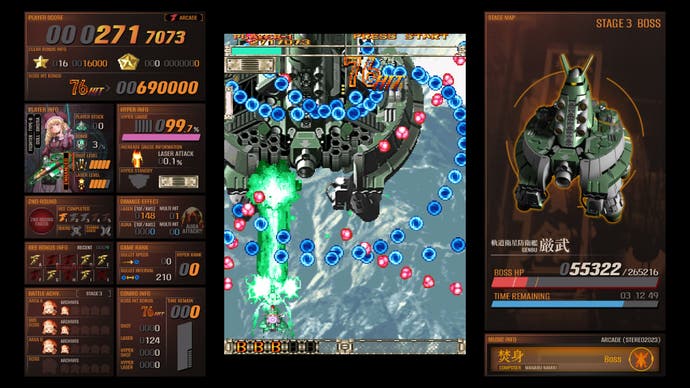
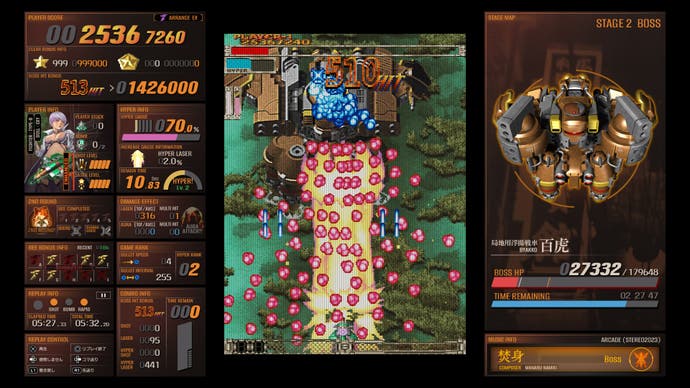
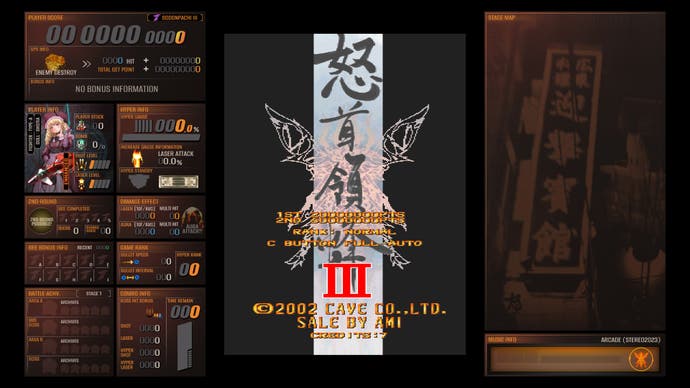
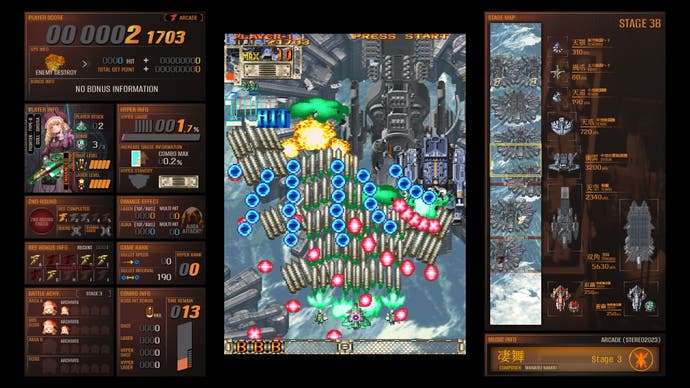
Let's be clear. The original DaiOuJou is appropriately generic. It scrolls vertically over five stages - or ten, in modes that offer a two-loop version - and yours is the task of downing vast numbers of enemies while definitely dodging your way through the mass of bullets they unleash. In spirit, it is a shooter that never lets up. After perhaps three seconds at the game's start, it is relentless. A few seconds more, and you face a ground installation that might be reserved for a stage-2 boss in many other genre examples. From that moment on enemies never let up in their swarming of the screen, while the bosses gleefully throw barrage after barrage. Armed with a wide shot, a powerful laser secondary weapon, and a classic bomb, yours is the task of pressing forward against a barrage of seemingly insurmountable odds with hardly a frame's respite. It is exciting, demanding and intense, yet even when you are totally overwhelmed, it is a wonderful place to be, loomed over by such incredible game design.
DaiOuJou is also a game that feels close to physical in its realisation, thanks in no part to its cyberpunk-leaning world built from dazzlingly detailed pixel art. The visual nuance is enchanting, with every explosion and piercing laser beam oozing aesthetic flare. That's something emphasised by the deliciously crunchy sound effects, and Manabu Namiki's musical score, which brings a thumping form of electronica informed by everything from vintage rave to techno and metal. Most impressively, the sonic and visual elements of every version of DaiOuJou included feel like a singular whole, as inseparable as a sound and its source out here in reality.
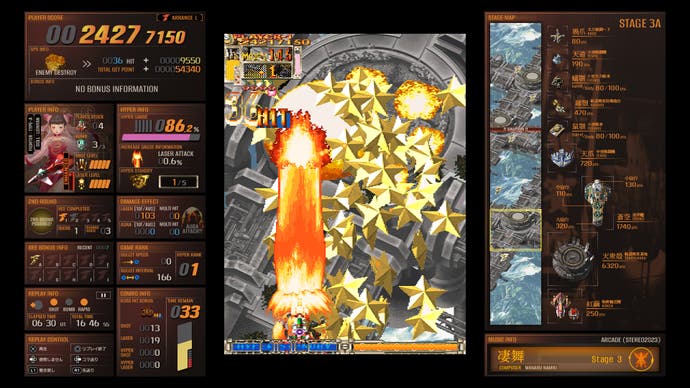
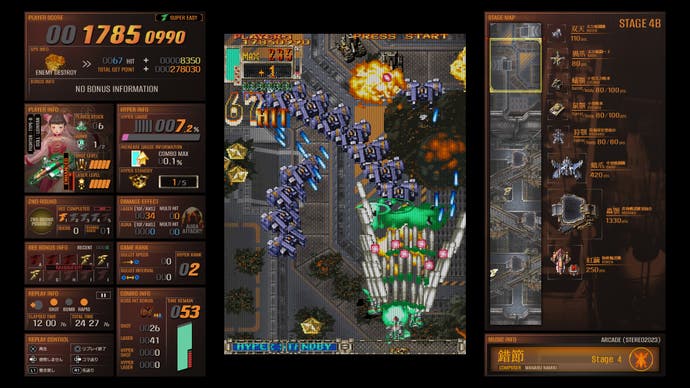
What really elevates the version of DaiOuJou on which this entire ShotTriggers release is founded, though, are its game systems, which are deeply integrated to all that foundational shooting and dodging. Like DonPachi and DoDonPachi before it, DaiOuJou is a chaining shooter. That means that, for every enemy killed in quick succession, a score multiplier is increased, causing exponential growth in the points you earn from each downed foe. Hold your laser on a larger enemy, and the chain is maintained or creeps up. Drop your killing streak for mere moments, and the multiplier resets, meaning you have to devise ways to bridge chains over areas where there are deliberately fewer enemies.
And then there's the Hyper; an alternative to the bomb earned through the likes of destroying enemies. Fill your Hyper bar, and a Hyper medal appears. Scoop it up, and next time you jab the bomb button, a Hyper will be released, unleashing a devastating firepower increase while also significantly increasing enemy bullet speed. As the Hyper ends, things return almost to normal, except for the fact that the 'rank' (essentially meaning 'difficulty') will have increased a little.
One credit into DoDonPachi DaiOuJou, and it feels impossibly insurmountable. But with devotion you can find a rhythm, and when you get to the point of generating a steady stream of Hypers while dancing through patterns and holding chains - all in a world that exudes detail and finesse - it really is about as exciting as arcade gaming can get.
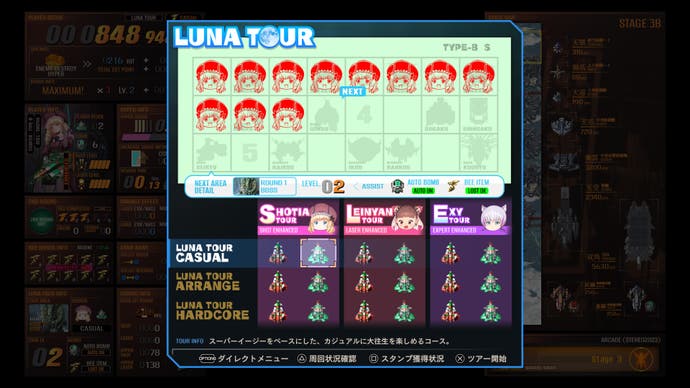
And so it is that M2 has delivered a stunning port of a 2D shooter in a class of its own. And that's just the start.
Because also included is Black Label; an updated, refined variant of the arcade original that increased the rate at which Hypers dropped, while subtly rebalancing the difficulty, slightly reducing hitbox size and bullet aggression, and, along with some other tweaks, polishing away some modest bugs. That essentially offers up a version of DaiOuJou generally agreed to be a shade easier. The package also includes the recondite DoDonPachi III, an adjusted version of Black Label intended for the international market that seemed to hardly see release.
You also get the eternally welcoming new Super Easy mode, which dramatically drops the bullet count and intensity, while still providing an authentic shooting game experience that has a knack for stealthily introducing you to high level play concepts. There's some challenge for absolute beginners, but Super Easy mode gracefully opens up one of the toughest games ever made to players with little shmup experience.


And then there are those three brand new 'arranges', entirely built by M2 for this release. Arrange S strips back most of the game's fundamental systems, before giving you a near constant stream of Hypers. Played simply, Arrange S is very easy to the point of occasionally feeling empty of substance. But the more you Hyper, the more you increase the risk summoning the real bullet hell. There's more to be unearthed than first meets the eye.
Arrange L offers a somewhat more demanding take on DaiOuJou with bullet cancelling introduced, meaning that downing certain enemies will convert whole screens of firepower into point-giving items; it's a wildly satisfying mode whatever your skill level, and a perfect challenge for those with just a little shooting game experience behind them. Finally, Arrange EX takes the bullet count to numbers far higher than seen in the arcade original, and offers a demanding challenge, albeit with its own bullet cancelling added, delivering something truly special for arcade veterans - and a dizziness-inducing thrillride for players of all skill levels.
If that weren't enough, there is also a reworked version of that stunning soundtrack available, a wealth of meticulous display and customisation options, and a trio of additional modes that break down DaiOuJou into smaller chunks, either as challenges or as a practice tool, including Luna Tour and Arcade Osari.
Something of a playable encyclopaedia of Cave's greatest shooter, then, resplendent with new entries that bring it strutting into the present while welcoming in many more types of player than were served in 2002.
At worst, the extreme difficulty of the main mode brings ample potential to demean, and that isn't for everyone. There's a language barrier here and there, but on the whole English dominates. Perhaps some of those UI gadgets teeter into providing more detail than is required, but you're given freedom to pick and choose what is displayed.
Singing the praises of an import game will always feel a shade awkward, but a digital edition on the Japanese stores makes it a whole lot easier to get at. And this really is an extraordinarily impressive, precise and ambitious version of not just one of the best shooting games ever made, but one of the most refined pieces of game design ever conceived. What ShotTriggers does to trump DoDonPachi DaiOuJou Blissful Death re:Incarnation, I can only imagine.
